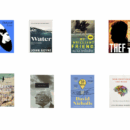The forgotten teaching method: culture

Hidden in Seth Godin’s book The Practice was a profound observation about how we learn things. Allow me to paraphrase the lesson today.
Seth observed that if you study kids of Indian origin in US cities, you may not find a huge liking for things like tandoori chicken or shrimp vindaloo. Yet, kids with the same DNA in Mumbai or Delhi might crave those dishes every day.
So it’s not about genetics.
Seth asks: how do the parents of those kids in Delhi teach them to like their own food? They do it like this, right? First, they teach them the history of Indian food, with all its variants. Then, they instruct them to memorize a number of key recipes. Finally they make them sit tests and public examinations. That’s how it’s done?
We all know the answer. Of course not!
The kids in India eat their own ethnic food because of culture. They do what they see being done around them. The community they live in eats—and enjoys—certain foods; therefore the children follow suit. The kids in the US are in a different culture. Their peers enjoy shakes and burgers and apple pie. The US kids follow the wider local norms—no matter what the parents want.
The real point: why have we forgotten about culture, as a force for teaching people things? Why are we so taken by the pedagogy of learning things? Why do we try to teach so many things using the drills of study, memorize, test? If culture is powerful enough to teach us what to eat, what to wear, how to behave, and so many other societal norms—why is it not powerful enough to teach us so much more? Why are we over-reliant on the artifice of formal teaching?
Let’s be clear: many disciplines require a rigorous pedagogic approach. Culture alone cannot teach people to be surgeons or scientists or architects. But wait, even in those fields, ancient civilisations relied on culture to teach pretty advanced techniques across a range of occupations. And in others, like art or even business, we lose so much when we rely only on formal classroom teaching.
Culture does not require classroom attendance or set texts or regular testing. That’s not how it works; that’s not how it transmits. Cultural norms spread because humans are social creatures; we do what is being done around us, especially if it’s done by society’s role models, or those we admire. Culture is responsible for entire communities being very good at business, for example. Not by making every youngster sit an MBA, but by example, modelling and practical guidance. Culture can pull off some pretty difficult teaching accomplishments, for example around health and personal discipline. It can also do the opposite: lead to the unravelling of society if the wrong people become the culture-setters.
Two thoughts about culture today. First, in our modes of education, let us visit the power of culture afresh. We should not rely on rigid teaching alone; we should also understand the humans we teach a little better, and let role modelling, mimicry, and kinship support the learning. If we stick to staid pedagogies alone, we are missing big opportunities to teach faster, better and more sustainably.
A second area of change should be in our organizations. We seem to rely so much on equally staid, episodic, traditional training. Our people need new skillsets? Let’s send them back to the classroom. By all means, let us retrain our people—we have no choice but to do that in this era of rapid change. The skills of the future must be learnt and relearnt. But is “back to class” the only way to do this?
The most powerful way to teach in organizations is right there beneath our noses. It’s called on-the-job training, and it’s become a forgotten process. People learn best not in artificial environments or situations, but when doing the actual work they need to get better at. That’s why we had apprenticeships—something that some of the more enlightened educators and trainers are bringing back today.
Frontline coaching is an excellent way to bring cultural transmission back to the workplace. Accomplished practitioners of a skill are taught how to coach; and they then supervise the actual work being done, unobtrusively and staying largely in the background, intervening only when something needs to be corrected.
Some excellent work in customer care training is done exactly like this; by skilled people hovering around, stepping in to rectify or rework situations, sometimes taking over the work temporarily so that the learner can observe the better approach—and then try it out, live and in real time.
How is learning happening in your organization? By rote or by example?
(Sunday Nation, 27 February 2022)

Buy Sunny Bindra's new book
The X in CX
here »
Popular Posts
- How to listen, really listenNovember 16, 2025
- Here’s why you should become foolishNovember 30, 2025
- Is AI hiring your company into oblivion?November 23, 2025
- Confessions of an explaining personDecember 7, 2025
- My books of the yearDecember 14, 2025















